Workflows
This comprehensive guide covers three automated workflow types: End User Creation flows (signup and admin-created), Identify Dormant Account flows, and Password Expiry Notification flows. These workflows enable administrators to streamline user management processes through event-based triggers and scheduled automation tasks.
End User Creation Flow
This workflow automates the end-user account creation process through signup flows and admin creation, with customizable filtering and task assignment capabilities.
Step 1: Create Workflow
- Navigate to the Automation >> Workflow.
- Click the Create Workflow button in the middle of the screen to open the modal. Enter your preferred workflow name (e.g., "New user creation test via signup flow") and description ("Workflow to test the end-user account creation process through the sign-up flow").
- Click Create Workflow to proceed.
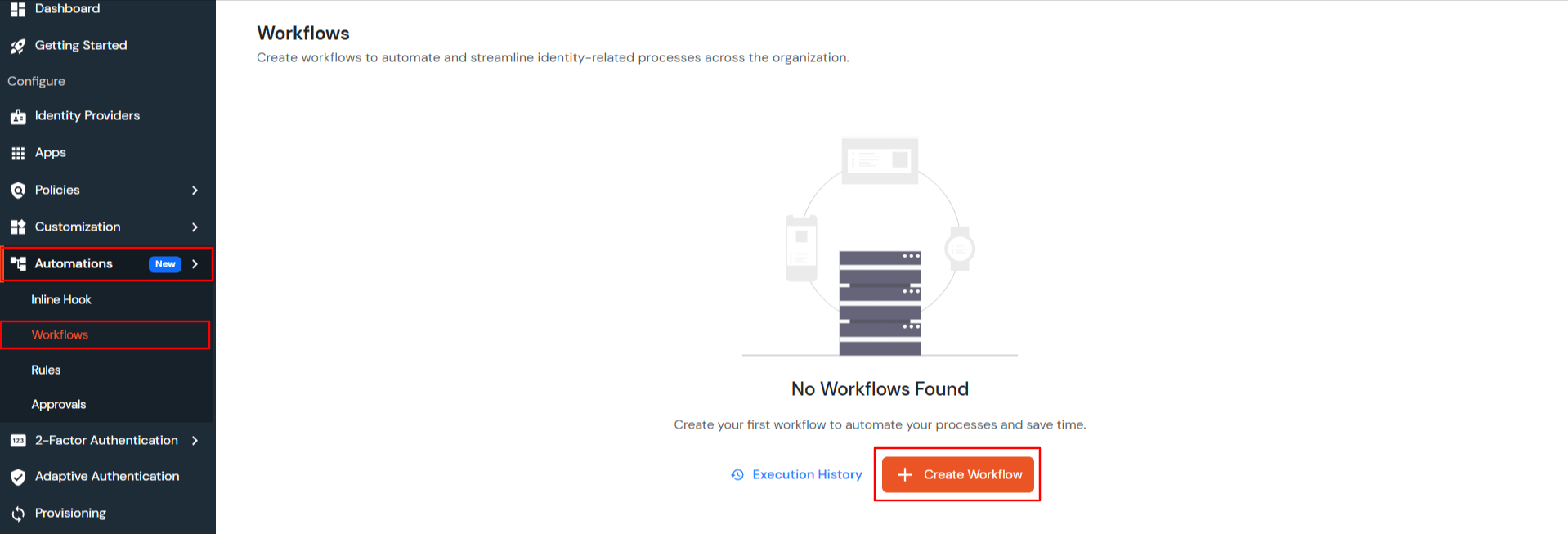
- A pop-up will open where you are asked to fill in crucial details.
- Click on Create workflow.
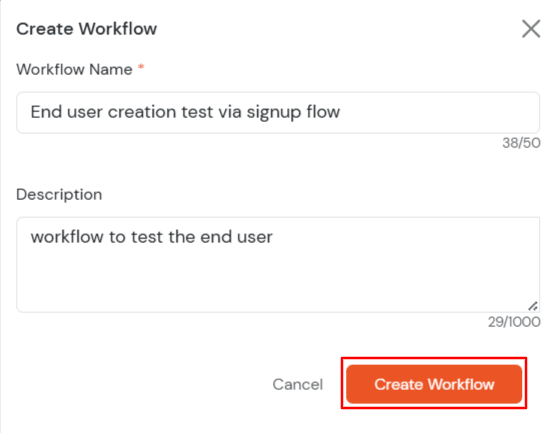
Step 2: Configure Canvas
- You'll be redirected to the canvas containing three blocks: Start Block, Add Trigger, and End Block.

- Click Add Trigger to open the Trigger Configuration drawer with two trigger type options:
- Event: For end-user creation workflows
- Scheduler: For time-based workflows
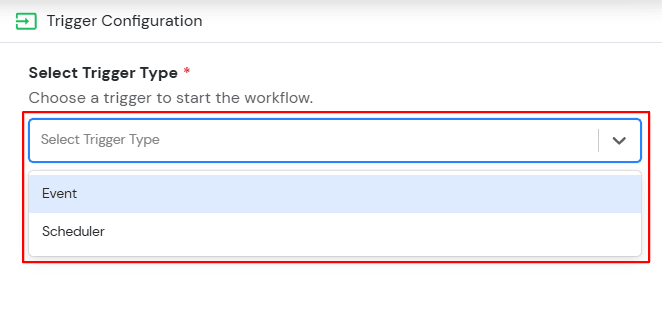
Step 3: Set Event Trigger
- Select Event to reveal additional options. Choose New User Creation and select your source:
- User Self-Registration: User creation via branded signup page (e.g., https://username.miniorange.in/moas/idp/usersignup)
- Create User via Admin Portal: Administrator manually creates users

- Click Save to proceed.
Step 4: Configure Workflow Blocks
- After saving, several blocks are automatically created:
- Event Trigger Source Block
Displays your configured trigger and source with an edit option available.
- Add Step (Before Event Block)
Configure filters for user creation conditions. For example, restrict user creation to emails containing "xecurify.com". Select attribute, operator, and value in the three dropdown fields.
- Event Block
Pre-configured block showing user creation status when filters are passed.
- Add Step (After Event Block)
Configure tasks to perform after user creation, such as group assignments.
- End Block
Indicates successful workflow execution completion.
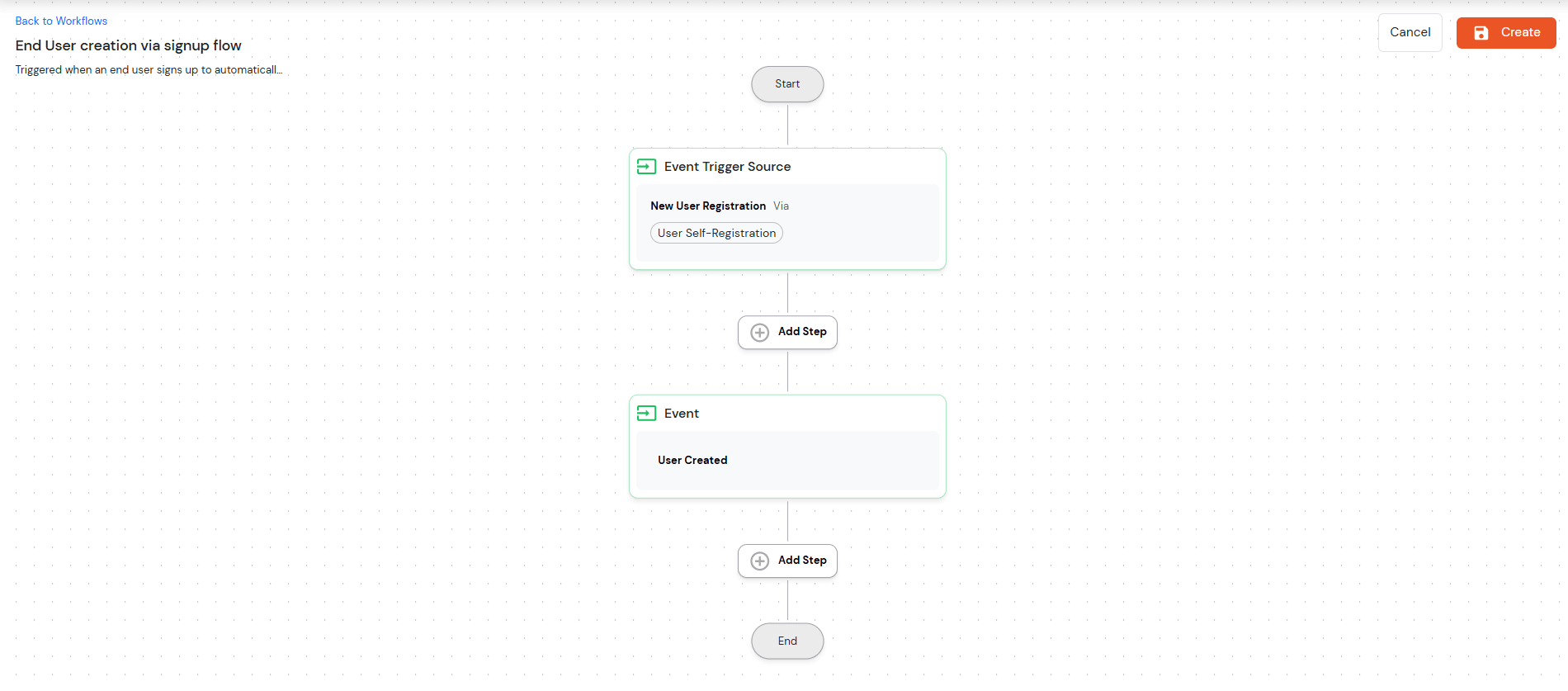
Step 5: Configure Filters
- Click Add Step (before event) to open the filter drawer. Configure three fields:
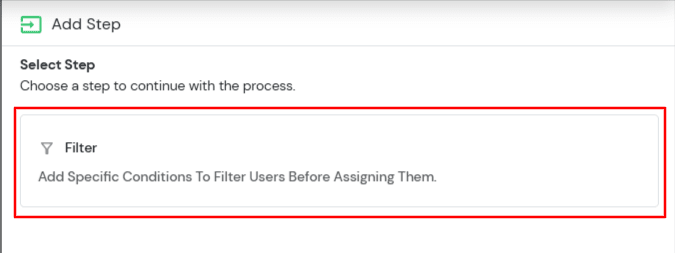
- Attribute: Select the user attribute to filter
- Operator: Choose the comparison operator
- Value: Set the comparison value
- Example: Email contains "xecurify.com"

- Click on Save
Step 6: Configure Tasks
- Click Add Step between the Event Block and End Block. Select Task then Assign to Group with three execution options:
- Always: Task executes without conditions
- Conditional: Task executes based on configured conditions
- Fallback: Executes only if no other condition-based tasks are performed
- Select the target group from the dropdown (create if necessary) and configure any additional conditions.
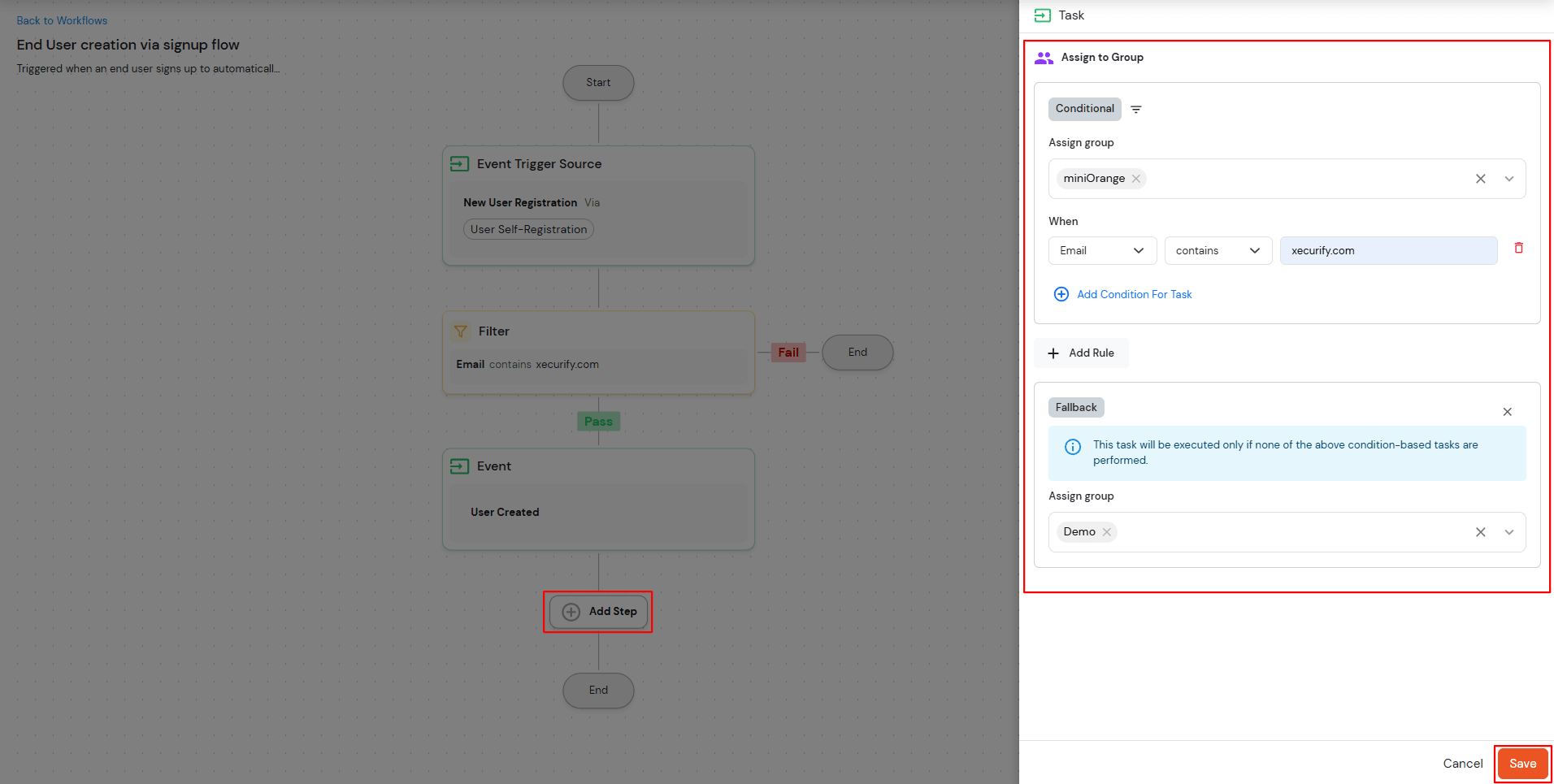
- Click on Save.
Step 7: Save and Activate
- Click Create at the top right to save the workflow. You'll be redirected to the workflow list page, where the new workflow appears with version status:
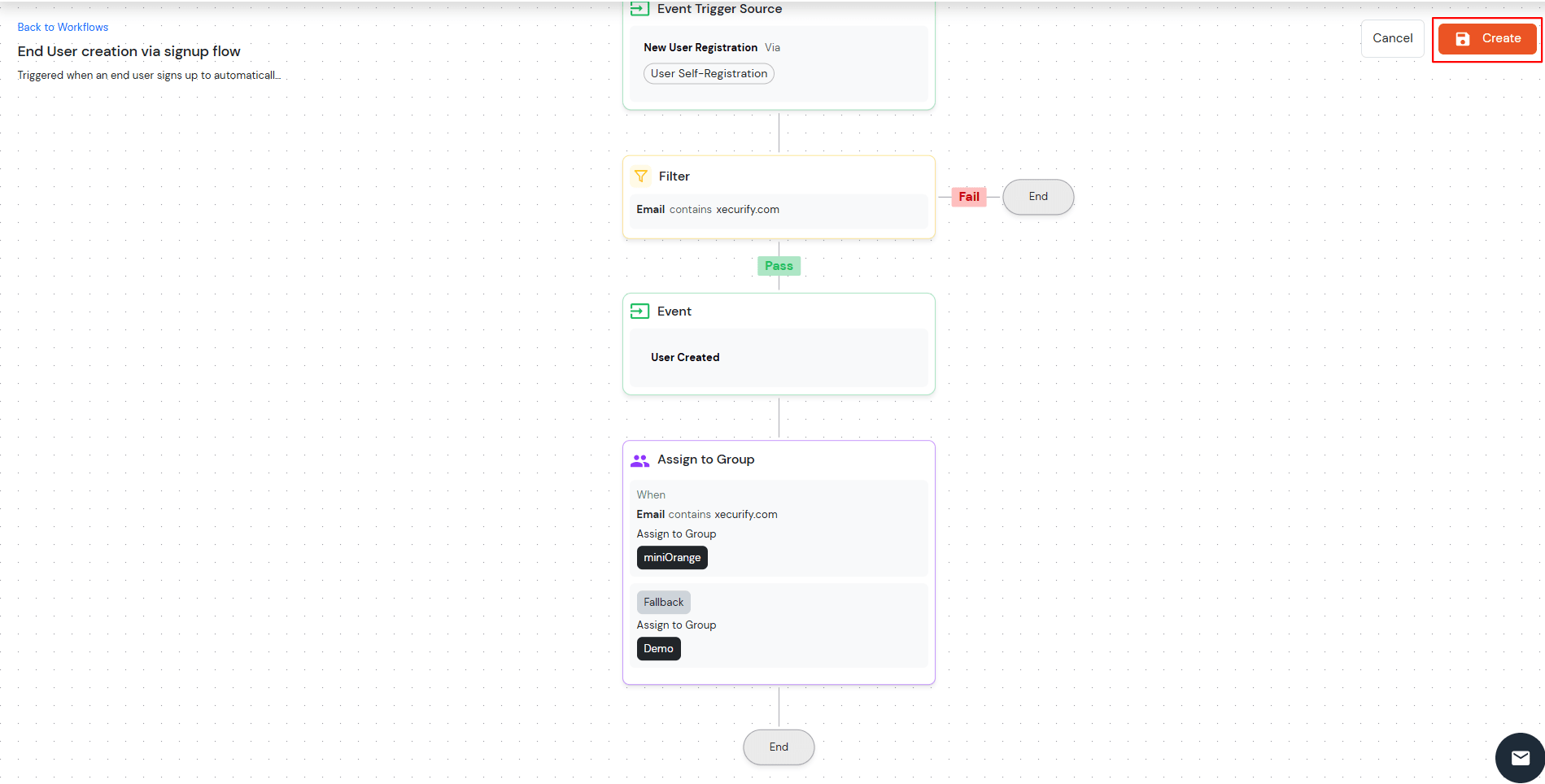
- Draft: Inactive version ready for editing

- Active: Currently executing version
- Published - Indicates a version that has already been activated and can be reactivated again when required.
- For deactivativating version - Just diable the workflow

- Use the action buttons to activate, preview, edit, or delete versions. A maximum of 10 versions per workflow is allowed.

Identify Dormant Account Flow
This scheduler-based workflow automatically identifies and manages dormant user accounts based on configurable inactivity periods.
Step 1: Create Workflow
- Click the Create Workflow button in the middle of the screen to open the modal. Enter your preferred workflow name (e.g., "New user creation test via signup flow") and description ("Workflow to test the end-user account creation process through the sign-up flow").

- A pop-up will open where you are asked to fill in crucial details.
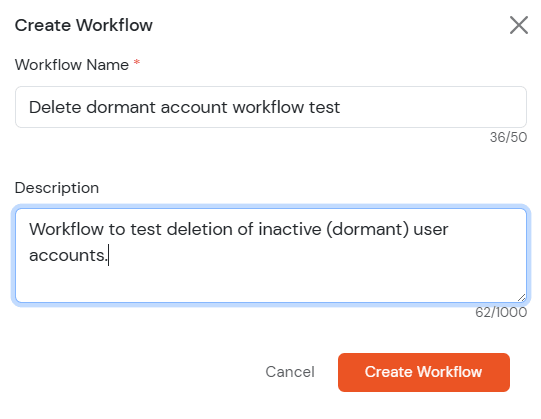
- Click on Create workflow.
Step 2: Configure Scheduler Trigger
- Select Scheduler to access pre-configured daily scheduling at 12:00 PM in your timezone. Available scheduler options include:
- Once: Single execution at a specific date/time
- Hourly: Every hour execution
- Weekly: Specific weekdays at chosen time
- Monthly: Selected monthly date at chosen time
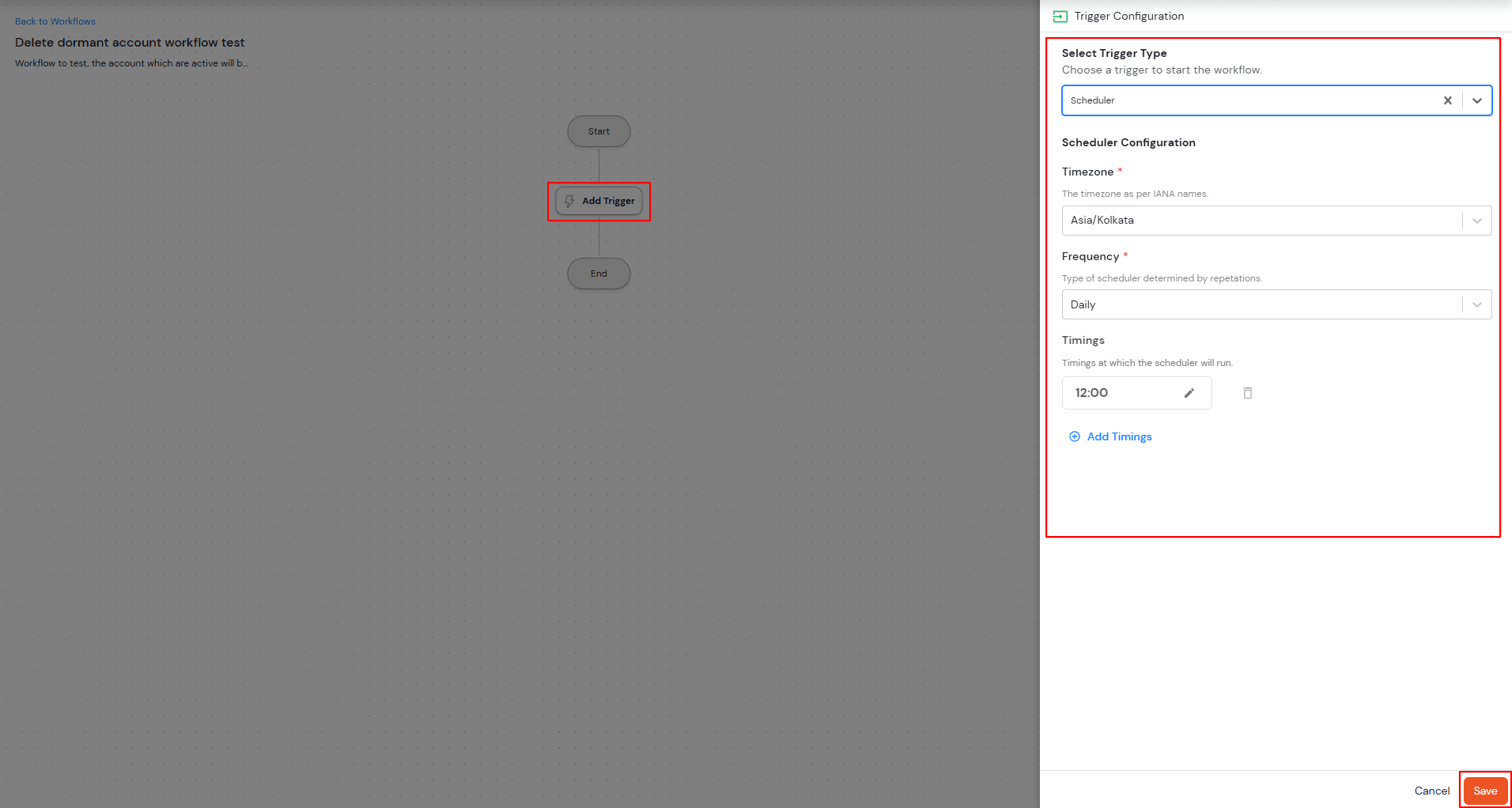
- Click on Save.
Step 3: Configure Dormant Account Task
- Click Add Task between the trigger and end event. Select "Identify Dormant Account" from the task dropdown.
- Configuration Options:
| Number of Days |
Select dormancy period (7, 15, 30, 45, 60, 90, 180 days, or Custom) |
| Custom Number of Days |
Enter specific day count when "Custom" is selected |
| Action |
Choose account handling method:
- Delete: Permanently remove dormant accounts
- Disable: Deactivate accounts without deletion
Send Report to Admin: Generate a report only without account action
|
| Send Report to Admin |
Available for Delete/Disable actions |
| Notify User |
Available only for the Disable action to inform users |
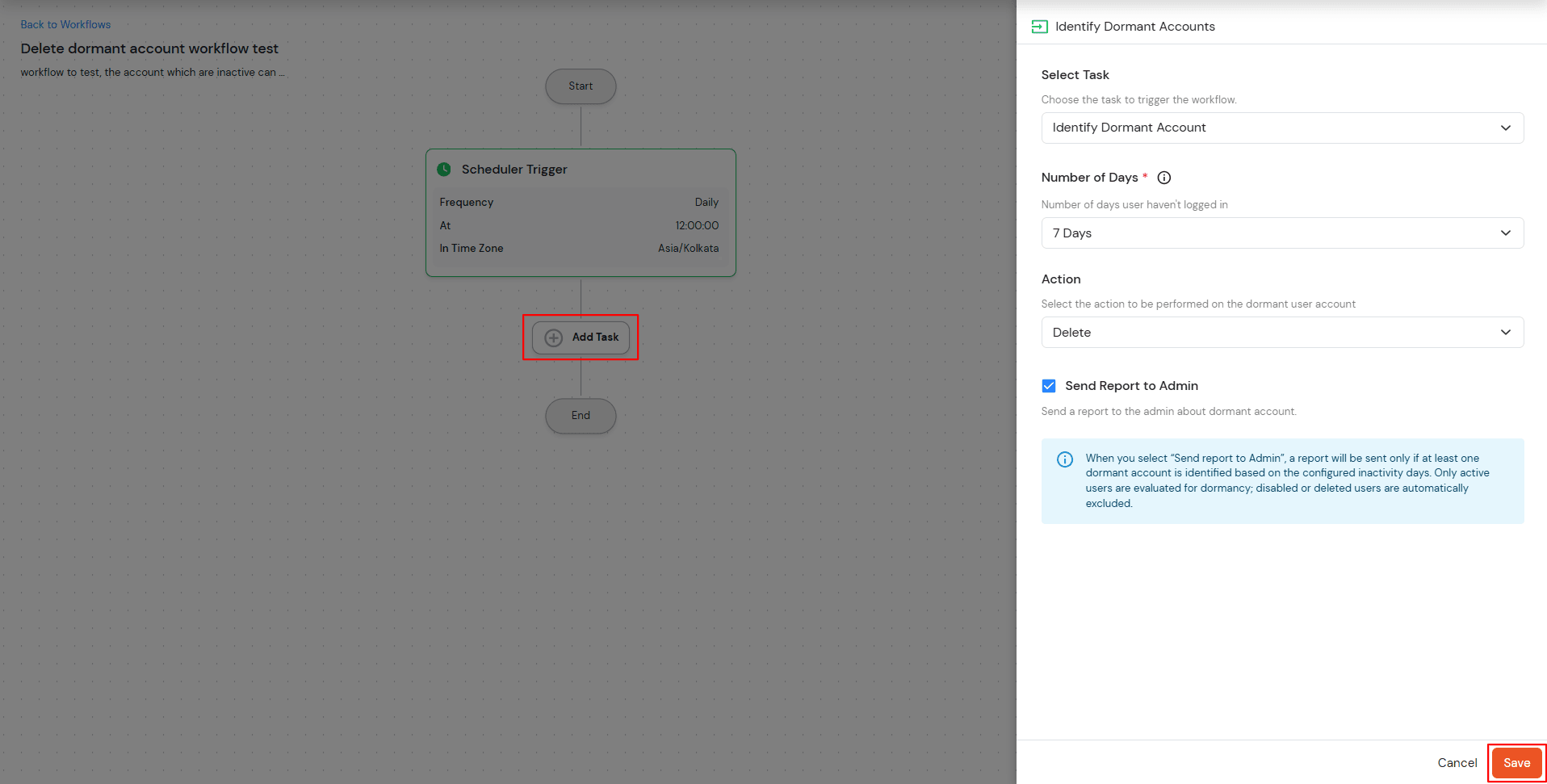
Step 4: Save and Activate
- Click on Save the task configuration, then save the entire workflow and follow the activation process described in the End User Creation Flow.
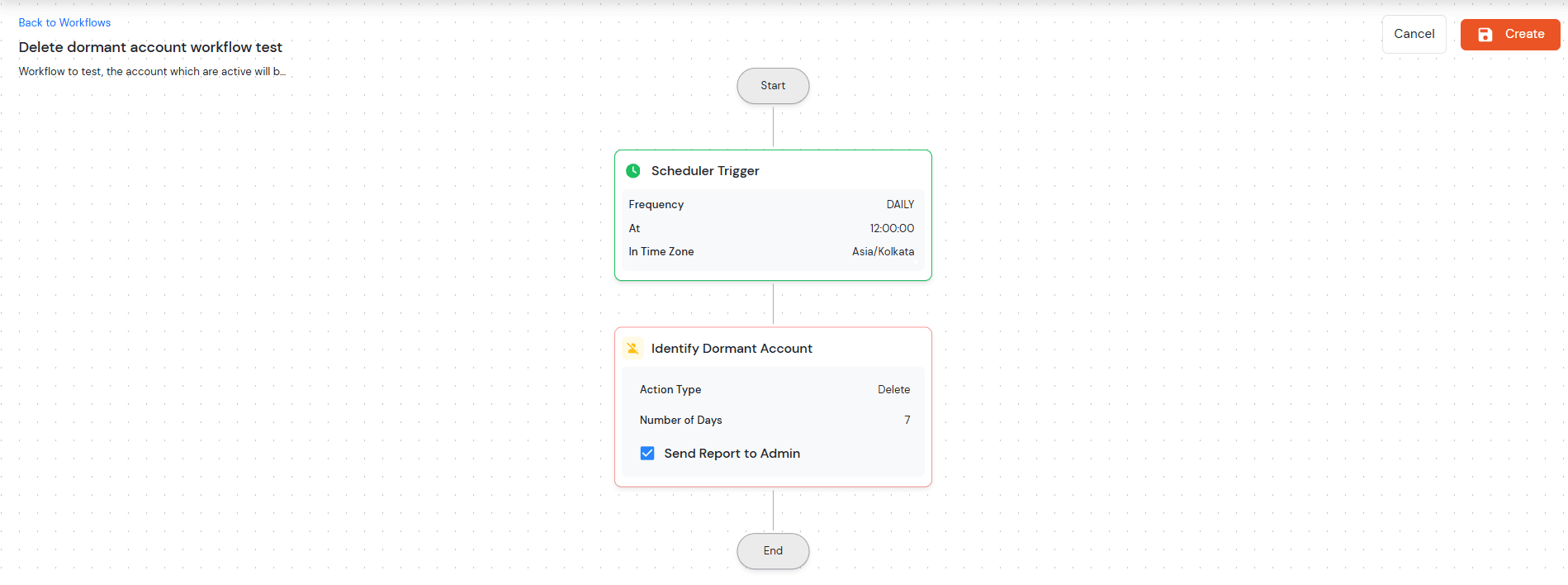
Notify Password Expiry Flow
This scheduler-based workflow manages password expiry notifications for users and administrators with customizable timing options.
Step 1: Configure Scheduler
- Click the Create Workflow button in the middle of the screen to open the modal.

- Enter your preferred workflow name (e.g., "Notify expiry password test ") and description ("Workflow to notifying user, who's their password is about to expire"). Click Create Workflow to proceed.
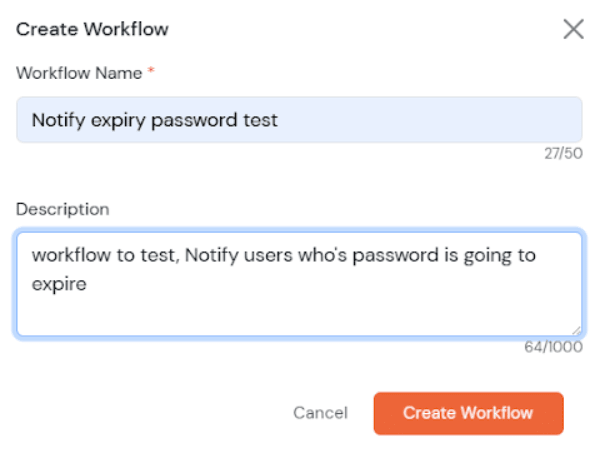
Step 2: Configure Password Expiry Task
- Select Notify Password Expiry from the task dropdown with these configuration options:
Before Expiry Notifications:
- Send Mail Before Expiry: Enable pre-expiry notifications
- Number of Days: Select intervals (Same Day, 7, 15, 30, 45, 60, 90 days)
- Multiple intervals can be selected simultaneously
After Expiry Notifications:
- Send Mail After Expiry: Enable post-expiry notifications
- Number of Days: Same interval options as before expiry
- Multiple intervals supported
Administrative Options:
- Send Report to Admin: Generate administrative reports
- Include Disabled Users in Report: Available only when admin reports are enabled
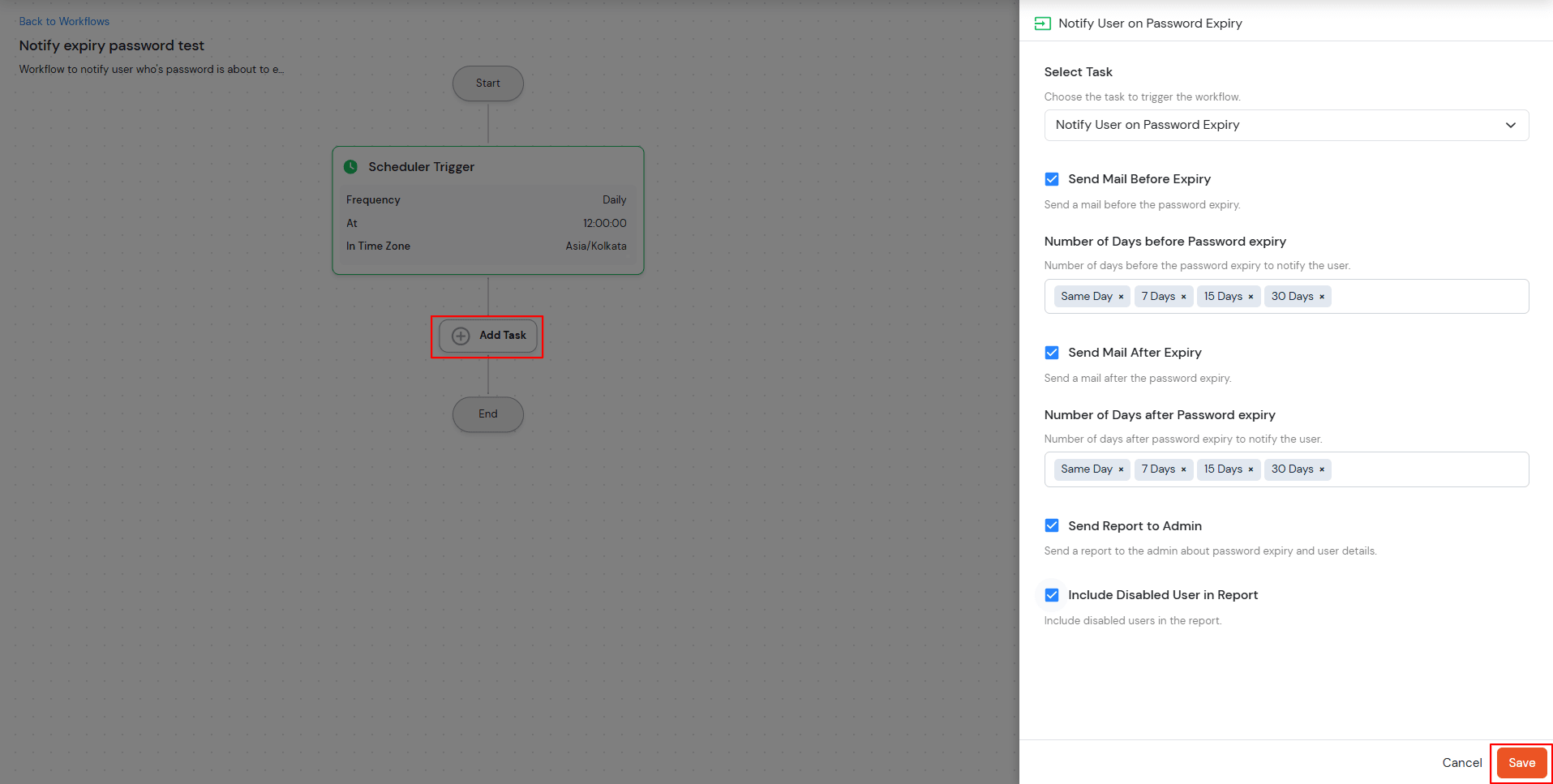
Step 3: Save and Activate
- At least one notification option must be selected. Save the configuration and follow the standard workflow activation process.
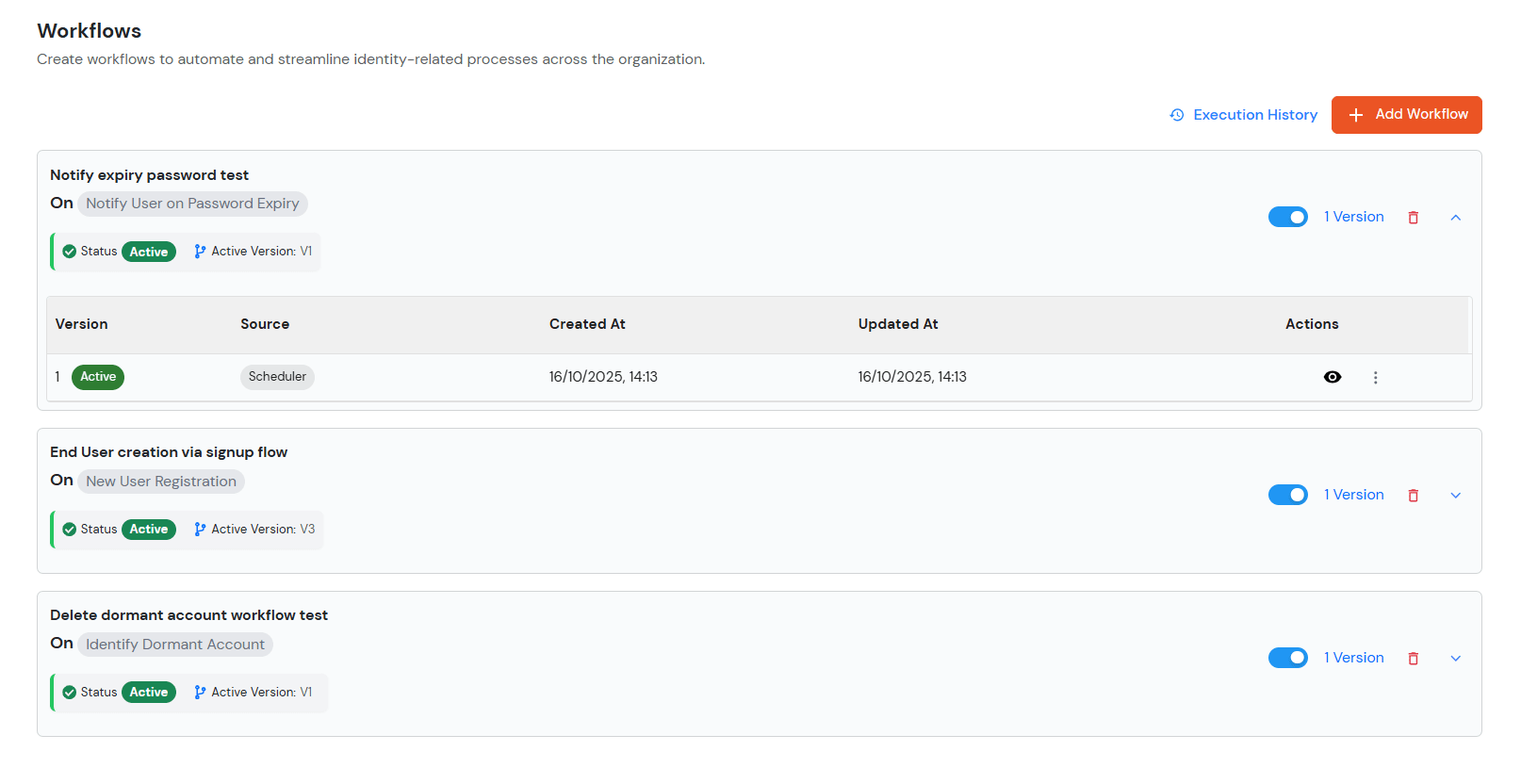
Important Notes
- The system automatically detects the timezone during scheduler configuration
- Multiple notification intervals can be configured for comprehensive coverage
- Both dormant account and password expiry workflows support various scheduler frequencies
- Workflows maintain version control with draft and active states
- Maximum 10 versions per workflow with activation/deactivation capabilities





















